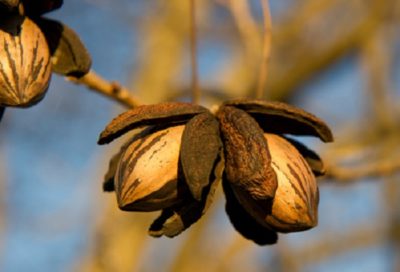
Image source: OurState.com
Let’s be honest: planting a nut tree takes patience.
After all, a black walnut tree can take up to 20 or 30 years before it produces walnuts. And a pecan tree can take up to 15 years. But planting nut trees can certainly be very rewarding. In fact, it can also be very lucrative.
Consider nut trees such as walnuts, chestnuts and pecans. A single nut tree can produce enough nuts to sell at a local Farmer’s market or roadside stand to make between $250 to $1000 a year. One black walnut tree can bring about $20,000 in timber alone. And if it’s well-managed, a five-acre plot of nut trees is enough to produce a full-time income. According to Bruce Thompson, author of Black Walnut for Profit, a mature stand of black walnut trees can bring about $100,000 per acre in timber alone.
If you have the patience and perseverance, planting nut trees can offer not only a great income and food for your family, but a legacy for years to come.
How To Pick The Perfect Tree
Although most nut trees can grow in the U.S., not all will produce nuts. Therefore, it’s important to select the right tree to grow in the climate where you live.
As a rule of thumb, wherever peach trees prosper, nut trees will also thrive. Pecans grow best in the southern states, while almonds and pistachios can only be raised successfully in California.
On the other hand, chestnuts thrive in many states including:
- Michigan
- Wisconsin
- Georgia
- Northern Florida
And if you like cashews or Brazil nuts, you’d better live in southern Florida because that’s the only place where they will grow. One of the most expensive nuts — macadamia nuts — grow best in Hawaii and southern California.
New Natural Fertilizer Doubles Garden Production!
But before you decide which tree to plant, here are some questions to ask:
- How much time are you willing to invest?
- What is the pH of your soil?
- How much space do you have?
- How long are you willing to wait until harvest?
- What kind of nut trees do best in your area?
- What is your favorite nut?
To find out which nuts grow best in your area, check with a local nursery or garden center. Non-profit organizations, such as the Arbor Day Foundation and the Northern Nut Growers Association, are also helpful.
How To Plant A Grafted Tree
Planting trees from nuts is inexpensive; however, it can take several years to produce a crop. A better way to grow nuts is to plant grafted trees, which you can buy from your local nursery or online.
Here are 7 steps to planting a grafted nut tree:
- Dig a hole large enough to fit the tree roots. Trim the taproot to a length of 20 inches, and trim off any broken roots.
- Plant the tree 1 inch deeper than it was in the nursery.
- Fill the tree roots with the moist topsoil until the hole is 3/4 full.
- Water the tree.
- Finish filling the hole with topsoil and water again.
- Trim off about 1/2 of the top of the tree.
- Wrap the trunk with tree wrap, brown paper, or aluminum foil for the first two years to protect the trunk.
How To Create A Lasting Legacy
Like anything worthwhile in life, taking care of a nut tree takes work.
Don’t forget to protect your tree from predators. To prevent squirrels and other rodents from getting to your tree, a dog or cat can help. Blue jays also love nuts; to keep them away, play recorded bird distress calls or predator cries from your orchard or yard.
And it’s especially important to care for the root of the tree. During the first few years, the roots are still developing. Weeds and grass can ruin the roots, so the soil surrounding the trunk should always be kept free of them.
Someone once said that you don’t plant nut trees for yourself — you plant them for generations to come. Although it may seem like a long time to wait, the roots will eventually become strong and you will begin to see the fruits of your labor.
Consider the words of the psalmist:
“And he shall be like a tree planted by the rivers of water, that bringeth forth his fruit in his season; his leaf also shall not wither; and whatsoever he doeth shall prosper,” (Psalm 1:3).
What tips do you have on growing nut trees? Tell us in the comments section below.
Sign up for Off The Grid News’ weekly email and stay informed about the issues important to you
 Off The Grid News Better Ideas For Off The Grid Living
Off The Grid News Better Ideas For Off The Grid Living




